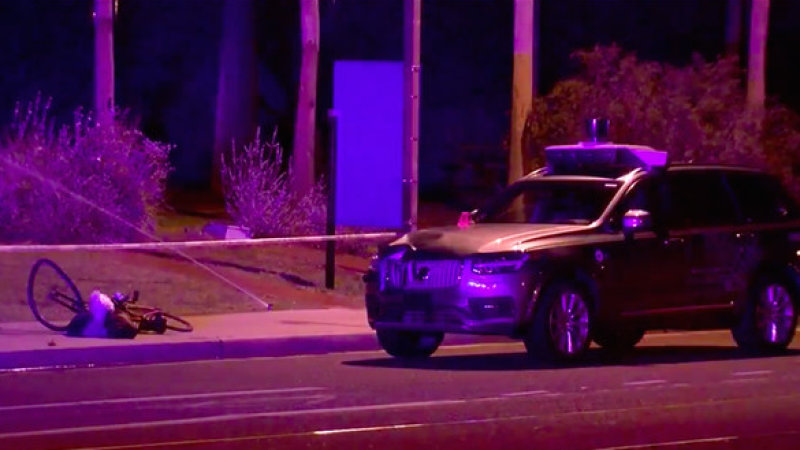I’ve worked in technology too long to believe that technology truly solves problems. But for some time now I’ve been curious about the spatial transformations of the city which are likely to result from the advent of autonomous vehicles. The recent fatality in Arizona highlights some of the philosophical issues which our societies will need to grapple with as we transition to the post-driving world. Technical developments will allow autonomous vehicles to outperform human drivers, but the surrounding moral issues still remain to be addressed.

Much attention has been given to navel contemplation about the trolley problem, a fine foil for discussion in a Philosophy 1 class, but almost entirely irrelevant to the way collision-avoidance code will work, or, as in this case, the way it will fail. A more substantial question is: Does an autonomous vehicle have a moral responsibility to avoid hitting pedestrians? On its face this question may seem trivial. But as we know from a century of highway deaths, blame in such incidents is commonly assigned to the victim.
The early reporting on the Tempe collision, quoting local authorities, highlighted that the victim was crossing the street outside of the crosswalk. So a more subtle framing of the moral question above becomes: Does an autonomous vehicle have the same responsibility to avoid hitting a pedestrian outside the crosswalk? And if so, should the vehicle behave any differently in that scenario?
The humanist perspective is that the vehicle should behave the same way for any pedestrian it detects in the roadway. This framing places the vulnerable road user at the top of the spatial hierarchy, by requiring faster, more dangerous road users to mitigate the risks associated with their road usage by deferring to vulnerable road users like pedestrians and bicyclists. This moral framework lies at the core of Vision Zero. I happen to (mostly) agree with it, but it would represent a huge change in our spatial practice, and changes to spatial practice are inherently contentious.
The engineering perspective, which has held sway for half a century, is that the pedestrian has committed a transgression, and is therefore at least partially responsible for the collision. Sylvia Moir, Tempe’s police chief, was quoted as saying, “It is dangerous to cross roadways in the evening hour when well-illuminated, managed crosswalks are available.” From this perspective, the solution to the problem of the pedestrian outside the crosswalk is to make sure the pedestrian stays in the crosswalk. That’s a real problem in a place like Phoenix/Tempe, where the street network is built at freeway scale. This is the spot where Elaine Herzberg was killed pushing her bike across the street.

What are those pathways in the median, across from the city park? They go from nowhere to nowhere, and they’re guarded by signs warning pedestrians not to cross the street and its five traffic lanes.

To get to the crosswalk from here would require traipsing through a cactus garden; there is no sidewalk. In this bizarre arrangement, this pedestrian median exists for aesthetic purposes only; the pedestrian pathways are places that pedestrians are not supposed to be. How can you make this space safe?
The traditional engineering solution is to keep the pedestrians out. Install crossing gates at the fake pathways, or better yet, put a big fence around the whole thing. But the engineering solution in the Smart City could be different; the crosswalk could be discarded altogether, and vehicles required to slow when a pedestrian enters the road. Alternatively, in a dystopian vision seriously proposed by engineers, signal beacons could be required for all non-motorized users so our robotic overlords can better decide whether or not to kill us.
Ironically, Tempe was chosen as a test bed for autonomous vehicles partly because of its wide roads, and its presumably simpler decision-making environment. But a dense city with low-speed streets would probably be a better test bed, not because autonomous cars need to be able to make complex decisions (though they do), but because decision-making errors at low speeds are far less likely to be lethal. Slow-moving road users will always be at risk on a facility like N Mill Ave. No amount of engineering can make a city designed at freeway scale as safe as one designed at human scale.
The promise of the Smart City is that it gives us the opportunity to have new conversations about the purpose of the street network, and the spatial hierarchies we should build there. Let’s make sure those conversations happen.


